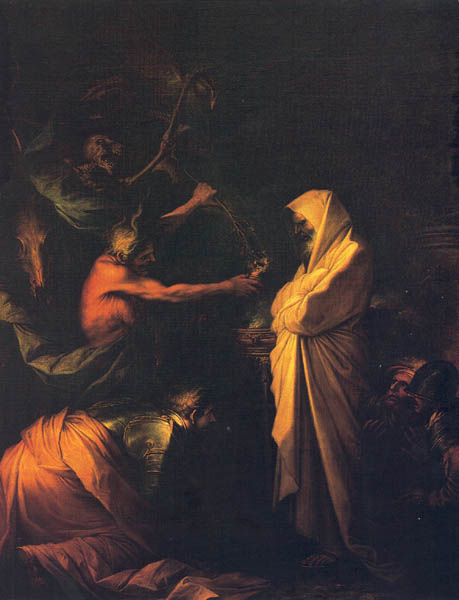Image Details

Scala/Art Resource, New York, NY
A desperate King Saul, lower left, and two companions, lower right, fall to the ground in fear and awe before the spirit of the white-shrouded prophet Samuel. In this painting by Salvatore Rosa, about 1668, the witch of Endor, depicted as a half-naked crone with wild hair, works her magic with burning incense and a branch-wand; an animal skull, a skeleton and an owl constitute her witch’s den. Saul, having to go into battle the next day against the Philistines, enlisted the witch of Endor’s aid for one last meeting with his erstwhile mentor. Samuel, however, can prophesy only death and destruction for the king, his sons and his army.
This tale (from 1 Samuel 28:3–25) is but the best-known example of necromancy in the Hebrew Bible. It was a common enough practice, however, to earn the scorn of post-Exilic Isaiah: “They will not save you—those deceased spirits of yours. The wind will carry all of them off, a breath will take them away” (Isaiah 57:13).
